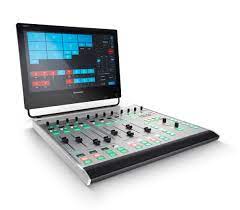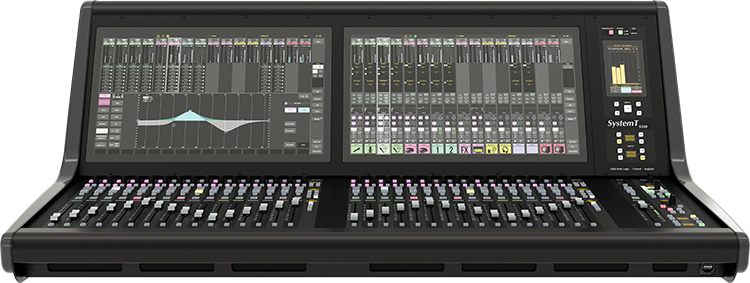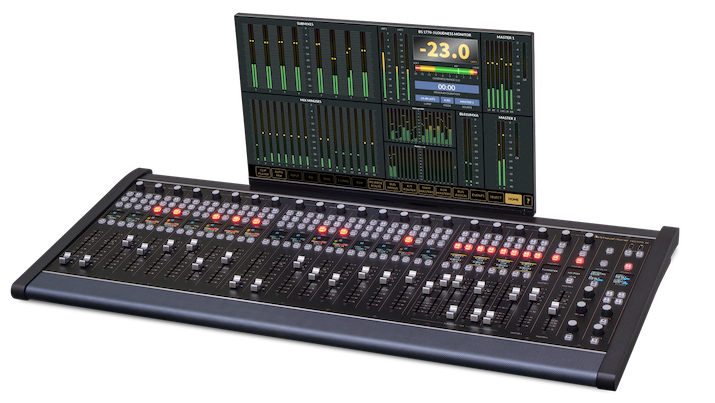Tech Focus: Radio, Part 2 — Consoles Have Plenty To Offer Sound for Sports on the Air
Networking, customization are increasingly important
Story Highlights
Updated November 9, 2021 – 9:42 a.m.
Sports broadcasts on the radio have their own special requirements, and manufacturers have kept their broadcast-audio consoles up to date. Here are some of their flagship models.
Click here for Tech Focus: Radio, Part 1 — Migration to AoIP Helps Keep the Medium Robust.
Axia
Quasar SR is the direct replacement for Axia’s best-selling Fusion console. Comparable to the Fusion console in both price and feature set, it delivers all the power, ergonomics, and industrial design of Axia’s flagship Quasar XR. Quasar SR uses the same frame, power supply, and master module as Quasar XR, but its fader modules are non-motorized, and there are fewer, larger, and more-accessible buttons on each channel strip. Available in sizes from four to 28 faders per frame, with support for up to 32 faders in multiple linked frames, the console offers a reduced footprint and connects to the network using a single or dual redundant Ethernet cable. Because Quasar SR is part of Telos Alliance’s Livewire+ AES67 ecosystem, communication with other devices on the network is easy, allowing detection, sharing, and control of audio resources across multiple studios.
Calrec
The Type R modular, expandable, IP-based audio console uses standard networking technology, combining it with configurable soft panels that can be tailored to operator needs. Type R’s physical control system comprises three slimline panels: a fader panel and a large and a small soft panel. Each is compatible with COTS hardware and is powered over Ethernet to keep cabling to a minimum. Type R has a simple 2RU core with integrated I/O resources to get customers up and running immediately. A single core can power as many as three independent mixing environments with dedicated DSP resources. Whether Type R is used as an independent studio console, microphone processor, or utility mixer, its ability to use multiple mixing engines combined with the flexibility of an AES67-compatible network enables it to keep pace with changing requirements. Type R provides simple customization across established networks, open control protocols, and surface personalization. With a native IP backbone, it provides an infrastructure for future expansion.
Lawo
The Ruby radio-mixing console delivers true AES67 networking with RAVENNA; a customizable, context-sensitive touchscreen GUI; AutoMix smart mixing; and 1RU Power Core mixing engine with hundreds of standard AoIP and MADI connections plus eight expansion slots for, analog, AES3, Dante, and studio-I/O connections. Reliability is ensured by dual-redundant networking with SMPTE 2022-7 Seamless Protection Switching, and ST 2110-30 for seamless interoperability within combined radio/TV-broadcast plants. Other features include a 1,920×1,920 routing matrix; 96 channels of DSP; and four-, eight-, 12-, and 16-fader frame sizes for consoles as large as 60 faders.
SSL
Consisting of IO, processing, control software and hardware distributed across network devices and computers, the System T and Network IO broadcast platform provides flexibility, scalability, and interoperability for radio and streaming. Direct-from-console AoIP routing control of Dante, AES67, and ST 2110-30 provides an unlimited audio matrix, connection management, and audio shuffling for true AoIP interoperability. Any AoIP input or output is immediately accessible to the console operator. System T’s programmable Events software provides customized macros and controls for simplified operation and integration. Eight built-in independent AutoMix groups complement full processing on all channels and buses. A comprehensive onboard Effects rack includes processing, metering, and measurement tools. Multiple remote-control positions on LAN or VPN provide independent controls for collaborative, remote, or decentralized working.
Wheatstone
The Tekton 32 is the company’s newest IP audio console, providing most sports-broadcast scenarios — whether from a MADI-equipped stadium, a remote truck, or a main studio — a tactile surface on the one hand and interface to a standard touchscreen on the other. Move faders and cue events on the surface. Pinch and drag EQ settings from the touchscreen. The console has dedicated faders for eight subgroups and two masters, along with 32 physical faders that can be layered for 64 channels. The I/O is managed through separate rack units so that any channel can connect to any audio source, using any preferred audio format at any time: HD/SDI, AES, MADI, AoIP, analog, or TDM. Everything essential to audio routing, logic, and processing is situated in racks and accessible via the WheatNet-IP audio network.
Blade 4, the fourth generation of Wheatstone’s I/O Blade, the interface for the company’s AoIP system WheatNet-IP AoIP protocol, has two OPUS codec channels built in, eliminating the need for an additional codec box to transport audio facility-facility or venue-studio. Blade 4 has provisions for mix-minuses, talkbacks, and other attributes so that, no matter where a particular source is pulled up, talent gets the correct talkback that goes with it. It also supports interoperability standards, such as NMOS for discovery and AES67 for audio transport, and multichannel support for one, two, or eight channels.





